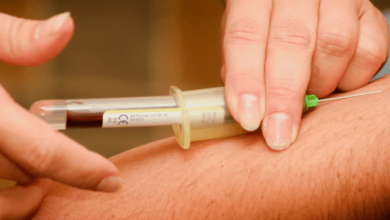Eye Test Puff of Air: What You Need to Know

Imagine sitting in a doctor’s office, waiting for your eye examination. As the optometrist prepares to perform an eye test, you may wonder what to expect. One common procedure used to assess the health of your eyes is the “puff of air” test. In this article, we will delve into the details of the eye test puff of air, explaining its purpose, procedure, and why it is an essential part of your eye care routine.
Introduction
When it comes to your eye health, early detection of potential issues is crucial. The eye test puff of air, also known as non-contact tonometry, is a diagnostic test that measures the intraocular pressure (IOP) within your eyes. By understanding the puff of air test, you can better appreciate its significance in preserving your eye health.
Understanding the Eye Test Puff of Air
The eye test puff of air is a quick and painless procedure performed by an optometrist or ophthalmologist. It aims to measure the pressure inside your eyes, known as intraocular pressure (IOP). Intraocular pressure is an important factor in determining the risk of developing conditions such as glaucoma, a group of eye diseases that can damage the optic nerve and lead to vision loss if left untreated.
Purpose of the Eye Test Puff of Air
The primary purpose of the puff of air is to screen for elevated intraocular pressure, which can indicate the presence of glaucoma or other eye conditions. Elevated IOP may result from an imbalance between the production and drainage of the fluid in the front part of the eye. Detecting high intraocular pressure early can lead to prompt treatment and help prevent potential vision loss.
Procedure of the Eye Puff of Air
During the eye tests puff of air, you will be seated comfortably in front of the tonometer machine. The optometrist will position the machine, which includes a small cone-shaped device, close to your eye. You will be asked to rest your chin and forehead against the machine’s support. The optometrist will then release a gentle puff of air onto the surface of your eye while you keep your eye open. The machine will measure the resistance of your cornea to calculate the intraocular pressure.
Benefits of the Eyes Test Puff of Air
The eye tests puff of air offers several benefits, including:
- Early Detection: By assessing your intraocular pressure, the test can aid in the early detection of conditions such as glaucoma, allowing for timely treatment and better outcomes.
- Non-invasive: The procedure is non-invasive and painless, making it comfortable for most individuals.
- Quick and Convenient: The eye tests puff of air is a rapid process, taking only a few seconds to measure your intraocular pressure.
- Comprehensive Eye Care: Incorporating the puff of air test into your regular eye exams ensures a comprehensive evaluation of your eye health.
Safety and Considerations
The eye tests puff of air is generally safe for the majority of individuals. However, some considerations should be taken into account. If you wear contact lenses, you may need to remove them before the test. Additionally, individuals with certain eye conditions or recent eye surgeries may not be suitable candidates for this specific test. It is important to discuss any concerns or conditions with your eye care professional before undergoing the procedure.
Eye Conditions Detected by the Puff of Air Test
The eyes test puff of air primarily detects elevated intraocular pressure, which can be a sign of glaucoma. Glaucoma is a progressive eye condition that damages the optic nerve. If left untreated, it can result in permanent vision loss. Other conditions, such as corneal abrasions or infections, may also be identified through the puff of air test.
Preparing for the Eye Tests Puff of Air
To ensure accurate results during the eyes test puff of air, it is advisable to follow these guidelines:
- Avoid applying eye makeup or creams on the day of the test.
- Remove your contact lenses before the examination, if applicable.
- Inform your eye care professional about any eye conditions, surgeries, or medications you are currently using.
Frequently Asked Questions (FAQs)
1. How often should I have the puff of air test? The frequency of the test depends on your eye care professional’s recommendations and your individual risk factors. In general, regular eye exams are recommended every one to two years.
2. Can I drive after the eye tests puff of air? Yes, the test does not impair your vision, so you can resume your normal activities immediately after.
3. Are there any side effects of the eye tests puff of air? Most individuals experience no side effects after the test. However, some may feel a slight discomfort or temporary blurring of vision.
4. Is the puff of air test covered by insurance? The coverage of the puff of air test varies depending on your insurance plan. It is advisable to check with your provider regarding coverage details. Read more…
Conclusion
The eye test puff of air, or non-contact tonometry, is a valuable tool in assessing your intraocular pressure and identifying conditions such as glaucoma. By incorporating this quick and painless procedure into your routine eye care, you can take proactive steps towards preserving your vision and overall eye health.




